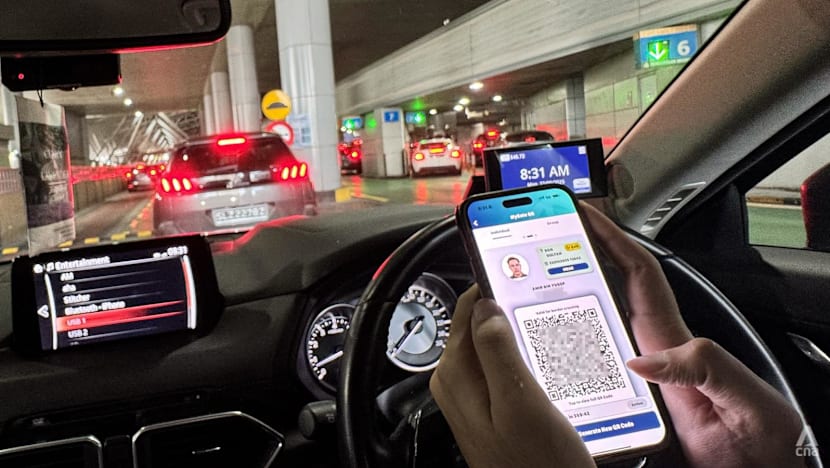World
Malaysia Launches QR Code Trial for Passport-less Border Crossing

The Malaysian Home Ministry initiated a pilot trial on September 22, 2023, allowing Singaporean and other foreign travelers to cross Johor land checkpoints using QR codes, eliminating the need for passports. The first day of the trial, however, presented mixed experiences for users navigating the new system.
My colleague, Ahmad Zamzahuri Abas, a Malaysian citizen, and I, a Singaporean, attempted to cross the border by both car and bus to provide insights into the QR code process. Our journey began at the Bangunan Sultan Iskandar (BSI) customs, immigration, and quarantine complex in Johor Bahru. We successfully downloaded the MyNIISe app and generated QR codes for travel without issues while entering Johor Bahru from Singapore.
The experience changed as we attempted to exit Johor during the busy morning rush. Immigration officers informed us that the QR code system was not operational at that time. Furthermore, a notice on the app indicated that QR codes were only valid for car lanes, despite previous announcements that the system would cater to car, motorcycle, and bus travelers simultaneously.
The introduction of QR code clearance was highly anticipated as part of efforts to streamline immigration processes, especially in light of plans for the Johor-Singapore Special Economic Zone, which aims to enhance connectivity between the two regions. While Singapore began utilizing QR code immigration clearance at its land checkpoints on March 19, 2022, this trial marks Malaysia’s first offering of passport-less travel opportunities for foreigners. Previously, Malaysian citizens had been able to clear immigration without a passport through a different application.
The pilot program for the National Integrated Immigration System (NIISe) is set to run for five months, concluding on February 28, 2024. This initiative aims to simplify border crossings and reduce the number of passport stamps for frequent travelers.
QR Code Generation Process
In preparation for our border crossing, I downloaded the MyNIISe app a day in advance. Generating QR codes for both individual and group travel took less than 15 minutes. After creating an account as a foreign visitor, I scanned my passport and completed personal information fields, including my phone number and email address. This allowed me to generate a QR code under the MyGate QR tab, which is valid for six hours.
While the QR code creation process was generally straightforward, I found it took slightly longer compared to Singapore’s MyICA app, which benefits from the Singpass system for streamlined information retrieval. Ahmad Zamzahuri utilized MyDigital ID, Malaysia’s parallel system, allowing him to generate a QR code in under a minute.
Challenges Faced at the Checkpoints
As we approached the BSI to exit back to Singapore, we were informed that only specific lanes could accommodate QR code immigration clearance. For drivers, this meant using counters in Zone B, while entering Johor via BSI required access through Zone D.
Upon arriving at counter B2 around 07:30, I attempted to scan my QR code but was met with the immigration officer’s statement that the system was not yet active. Despite this setback, we were able to clear immigration by presenting our passports. Upon returning to Johor Bahru through Zone D, the QR code system was active, enabling us to complete the process in under two minutes—significantly faster than the traditional method.
Attempts to test the app for bus travel were hindered, as the QR code was limited to car lanes at BSI and the Sultan Abu Bakar Complex, the immigration facility linked to Tuas Second Link. A senior official from the Malaysia Department of Immigration confirmed that the QR code system was currently functional only for car travelers and did not provide a timeline for when it might extend to buses or motorcycles.
The QR code clearance system has the potential to significantly expedite immigration processes at Malaysian checkpoints. However, the initial challenges experienced during this trial highlight the need for further adjustments and communication to ensure a smooth rollout as the pilot progresses. As travelers eagerly await the full implementation, the authorities will hopefully address these issues to enhance user experience in the coming months.
-

 Business5 months ago
Business5 months agoKenvue Dismisses CEO Thibaut Mongon as Strategic Review Advances
-

 Lifestyle4 months ago
Lifestyle4 months agoHumanism Camp Engages 250 Youths in Summer Fest 2025
-

 Sports4 months ago
Sports4 months agoDe Minaur Triumphs at Washington Open After Thrilling Comeback
-

 Sports5 months ago
Sports5 months agoTupou and Daugunu Join First Nations Squad for Lions Clash
-

 Top Stories5 months ago
Top Stories5 months agoColombian Senator Miguel Uribe Shows Signs of Recovery After Attack
-

 World5 months ago
World5 months agoASEAN Gears Up for Historic Joint Meeting of Foreign and Economic Ministers
-

 Health4 months ago
Health4 months agoNew Study Challenges Assumptions About Aging and Inflammation
-

 Business5 months ago
Business5 months agoOil Prices Surge Following New EU Sanctions on Russia
-

 Entertainment4 months ago
Entertainment4 months agoDetaşe-Sabah Violin Ensemble Captivates at Gabala Music Festival
-

 Entertainment4 months ago
Entertainment4 months agoBaku Metro Extends Hours for Justin Timberlake Concert
-

 Top Stories5 months ago
Top Stories5 months agoRethinking Singapore’s F&B Regulations Amid Business Closures
-

 Business5 months ago
Business5 months agoU.S. House Approves Stablecoin Bill, Sends to Trump for Signature









